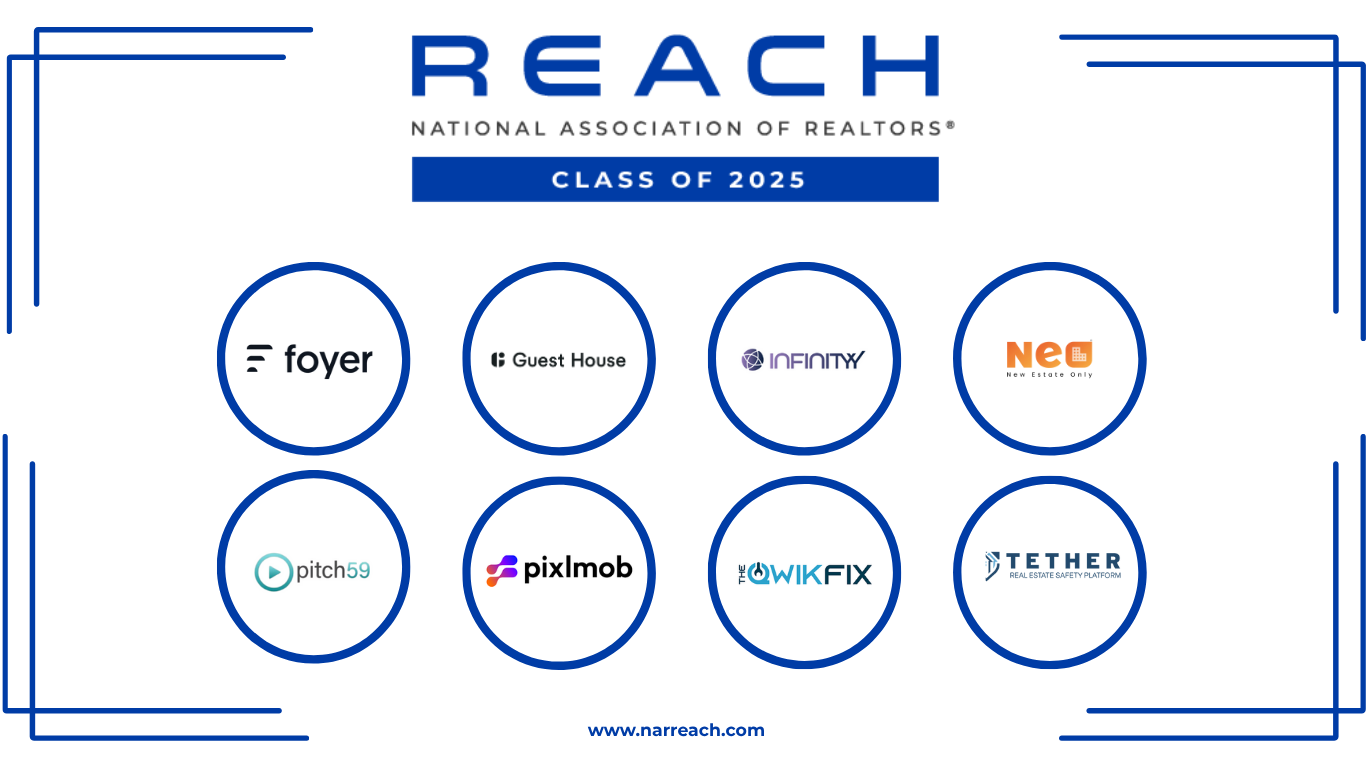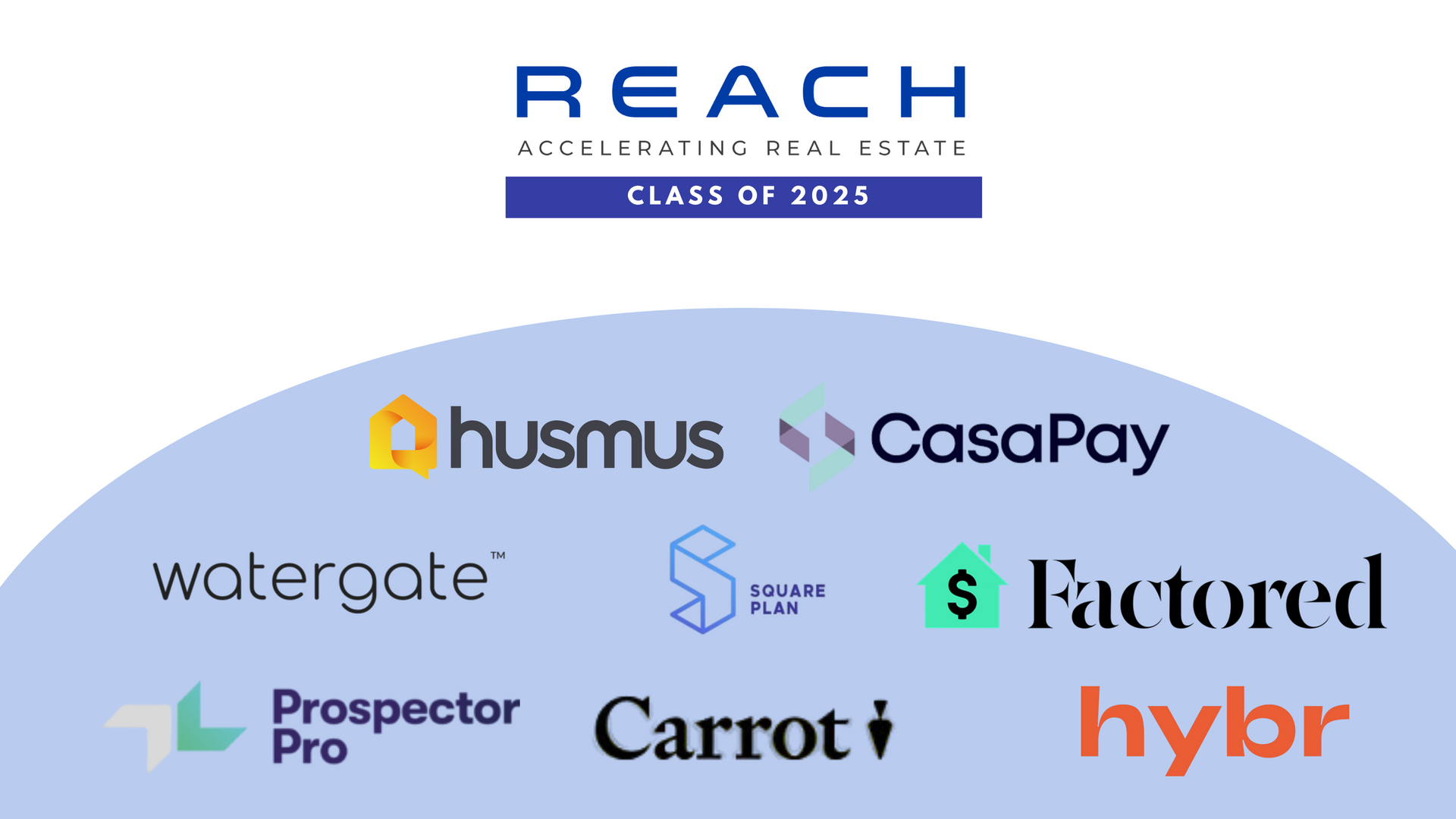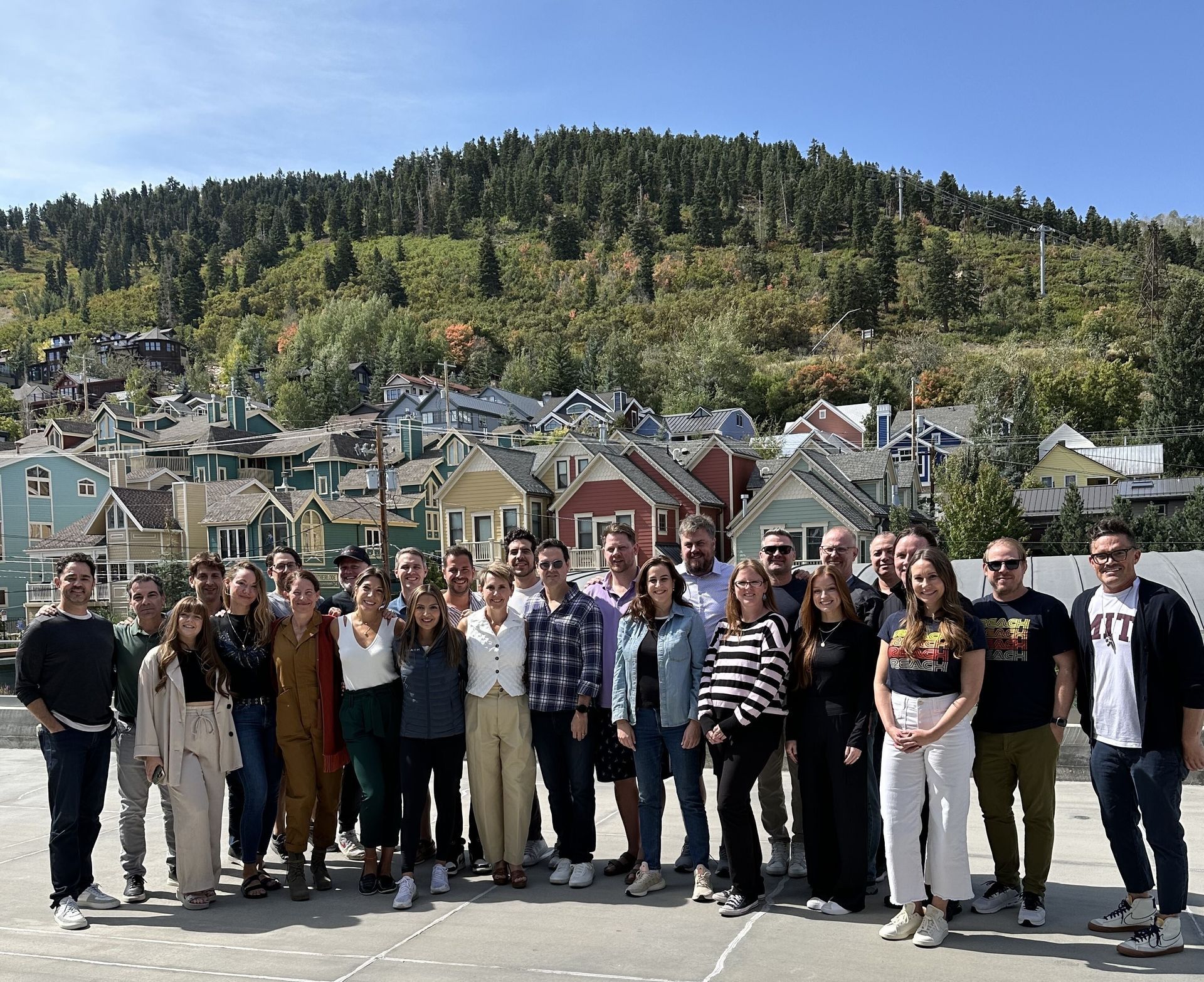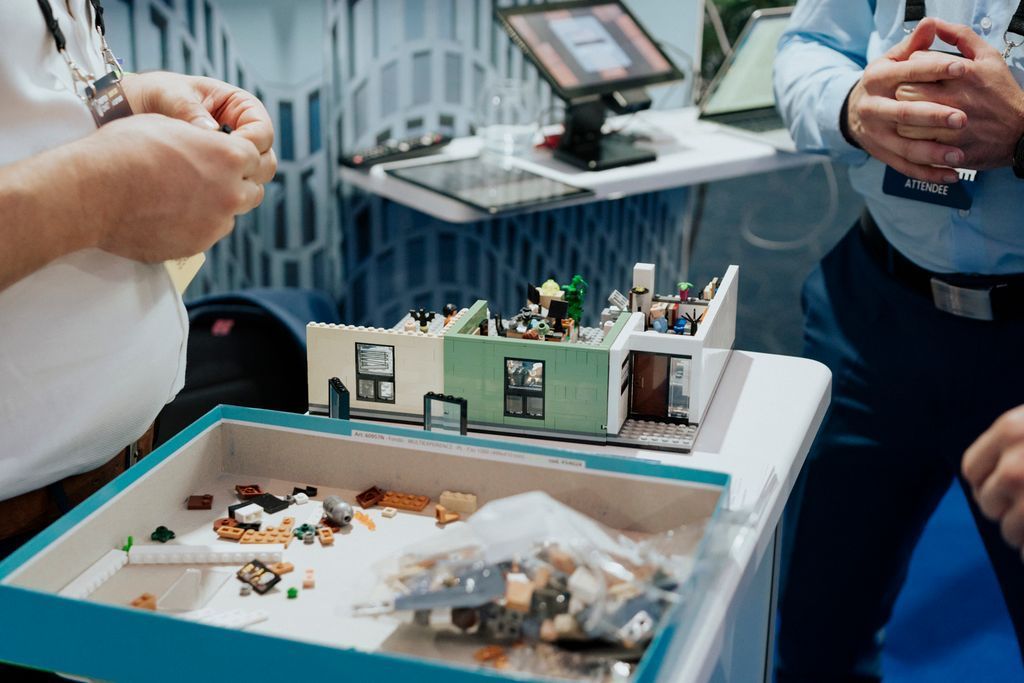Beyond the Box – Season 1 – Episode 2 – Lynette Keyowski – Managing Director at REACH Canada
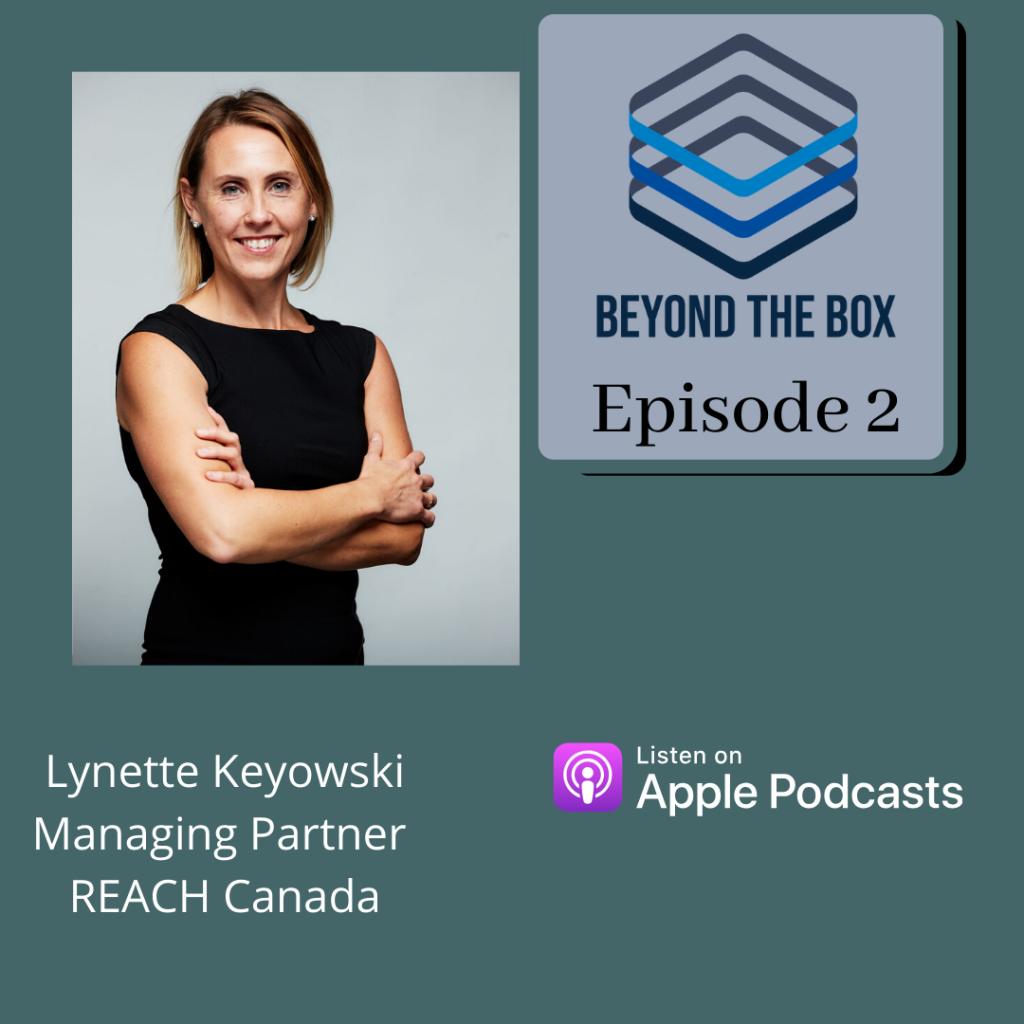
Beyond the Box – Season 1 – Episode 2 – Featuring the Managing Director of REACH Canada, Lynette Keyowski.
Listen on Google Play:
**Will be coming to Google Play soon**
REACH Canada Director Mike McAra chats with Managing Partner Lynette Keyowski about the challenges faced by Associations, and new opportunities they have to pivot to better serve their membership.
“The box is now physically different and as a matter of fact, associations need to create a new box, right? And it may no longer be around demonstrating the value of a REALTOR®. It may no longer be around providing a great MLS system. It might not be around PR and professional standards…those types of things. It may now be around the competitive advantage as you noted. The competitive advantage of brokers has now been wiped away and everybody is now working from that same new plateau.“
Full Transcript of the Show
Mike McAra – Beyond the Box Host:
Perfect! Alright, so we
are extremely lucky to have Lynette Keyowski. The Managing Director of REACH
Canada, and also the executive advisor to Second Century Ventures. So, thank
you for coming on, Lynette.
Lynette Keywoski – Managing Partner, REACH Canada/Second Century
Ventures:
Well, thank you for having me, Mike.
Mike McAra – Beyond the Box Host:
And for those who don’t
know this, Lynette is actually my boss. So hopefully this goes over quite well.
But you know, I guess I won’t have to ask any too hard of questions in this.
I’ll try to be easy on you.
Lynette Keywoski – Managing Partner, REACH Canada/Second Century
Ventures:
Let’s use the term, “boss” in like the least possible sense.
Let’s be real, you drive the bus more than I do.
Mike McAra – Beyond the Box Host:
Okay, okay, see the easy
question is done already. So obviously we have lots to dive into on this.
There’s clearly lots going on in the world. You know, one of the premises about
this podcast is, you know, thinking outside of the box in the way we used to do
things and how things are sort of transcending into this new reality, whatever
that may be. And we’ll get to that, but you have a very interesting story, and
I would love to hear it in your words. You know, how does a former CEO of a
real estate association, you know, the people all of us tech company people
want to sell to, become the managing director of REACH Canada? You know, the
scale-up program, one of the largest in the prop tech space, that’s now part of
this mass global network. How did all that come to be, Lynette?
Lynette Keywoski – Managing Partner, REACH Canada/Second Century
Ventures:
Well, I’d like to say it’s just a great by-product of the
networking-effect and getting to know people really well in the bars, at what
used to be really amazing real estate events. So, I mean there’s some truth to
that.
Mike McAra – Beyond the Box Host:
It’s a relationship
business.
Lynette Keywoski – Managing Partner, REACH Canada/Second Century
Ventures:
It’s a relationship business. But the reality is, my view on
how well the industry has or maybe in some senses, hasn’t taken advantage of
technology is what really lead me to this place. So, I wouldn’t say it was a
direct path from being an association CEO. But certainly, it is all of those
relationships and it’s one of those examples of, kind of, you get what you
give, right? What you’re putting out there is what you get back in return. And
I’ve always been a firm believer that, you know, there’s a lot of value in the
real estate sector. There’s a lot of value in what real estate practitioner on
the ground does. As a real estate association CEO, I often found myself in a
bit of a challenge; often times, even in a conflicted place in terms of my
ability to really affect great technology to help the people that I was there
to help. And so, through an amazing number of relationships, the opportunity
was presented to me, and initially it was only presented to me as a concept.
Like, “Hey, we’re thinking of taking this REACH thing global. What do you think
about this? And would you be interested in participating?” And I was like,
“Yeah, sounds pretty cool, keep me posted.” So, yeah, I think it’s again, one
of those…. One of those situations where you take advantage of the opportunity
and lean in when it’s there. But you… when you have a vision and a view and,
you know, kind of a gut feel for what needs to happen, those opportunities make
themselves a lot more known. So, I feel really grateful to be here, but I think
that’s a bit of a trajectory. Relationships, a desire to do really great
things, understanding the opportunity for technology to fill that gap, and then
having the opportunity present itself.
Mike McAra – Beyond the Box Host:
Well, I mean, really,
it’s been in my view, on the surface it could look a little bit “different.”
You know, you’ve got the association side, and you’ve got the venture side, but
the reality is, is you know, you actually have a similar opportunity here with
this role is enhancing member benefit, just through another way.
Lynette Keywoski – Managing Partner, REACH Canada/Second Century
Ventures:
100% Mike. You know, that’s the… what drives me and jacks me
about this opportunity is the fact that it is a… you know, it gives me more
tactile opportunity. It gives us more tactile opportunity to meet those needs
of those people. And, you know, not at all to disparage the structure of
organized real estate, it’s the backbone on all of why we have the practitioner
and the ability for the practitioner to get out there and deliver that value.
But it does create some challenge. And I think there’s, you know, I also think
it’s a timing thing, it’s evolution, right? The industry in its own way is
evolving. And technology doesn’t wait, right? It’s actually what I love about
the space is the internal optimism of entrepreneurs that really look at
challenging issues and problems. And they’re like, “Okay, we’re going to go and
solve that right now. It’s not tomorrow, it’s right now.” And that’s what’s so
cool, is we have this opportunity to bridge that kind of gap.
Mike McAra – Beyond the Box Host:
Very cool. Very cool. Okay,
so going back to your life as an association CEO, because, as a former tech
founder the conversation we’ve had at the board room tables, if we can only
sell to the association. You know, if we can get in front of the association,
we can get there. That’s a company maker, that’s break even, we can go from
there. So, you’re an association CEO, former association CEO, I would love to
hear your, from your point of view, as tech companies would approach you with
their big, new ideas and how they can enhance the numbers. You know, just sort
of what that would look like, and how often the process and if you could speak
to that, and that sort of side.
Lynette Keywoski – Managing Partner, REACH Canada/Second Century
Ventures:
Yeah, so I think it’s interesting Mike. Like, I’m learning
more about that process now in this role than I even knew about it then, right.
Because then I was really just on the receiving end of a lot of those calls and
I, you know, over the last decade or so that I’ve been in the industry or so,
I’ve had the opportunity to talk with a lot of real estate tech companies and
their approach to get their product to market, and it depends on the product,
first of all. So, there were two streams to that to say that we were generally
approached with. One was, can we utilize you as the association as the conduit
to get our product into the hands of real estate practitioners. So, basically,
can you just be our marketing channel, or part of our marketing arm. So, there
was that aspect, and the other piece was the association type of technology.
So, you’d back in CRM’s, MLS systems, lockbox systems. And then as that
evolved, add-ons or ancillary products that would enhance how we delivered
those products. And then, sort of more recently, there was a hybrid of the two:
Can we utilize your existing core technology as the associations, so again,
your backing CRM’s or MOS’s system to integrate our solution, to then better
get into it into the hands of your members. And so, that conversation evolved a
little bit. So how often? You know, that would depend. That would depend on your
market size. So, I was the CEO of an MLS [7:19]*** Association of about 1500
members, so we’d be on the smaller side, but likely in that bucket at the
largest number of associations from a population distribution size. So, the
biggest associations in Canada, there are only a few of them at the high end in
terms of a large number of members. Large number of associations kind of in the
middle and then you’ve got some of the smaller ones. So, we’d be approached
quasi-regularly. The Okanagan’s are a really great market opportunity, so
there’s a lot of value houses, really great exposure opportunity. So, what that
would look like is I’d often get an email, or a cold call from a founder or a
CEO of a tech firm and it’d be like, “Hey, we’d really love you to look at this
great solution. We think it’s going to be the next best thing for real estate
practitioners. Can we have a meeting with you?” So, you know, that would happen
maybe once a month, give or take at our association’s level. There was always a
bit of a lens that we look through. One is, are you looking to us to be a
conduit? Because a conduit at an association doesn’t necessarily mean there is
a guaranteed market opportunity there. We’d put you on our list of preferred
vendors, or we can give you access to the roster. We still have to do the work
and sell your product. On the other end, if it was about a piece of association
technology, it was, “okay, how do we justify the additional spend out of our
members money.” Because that was how it was always viewed, and we had a
responsibility to the members, but this is actually a value add to how we
deliver services to them. So, the lens we often look through was, does it allow
us to better serve the member, or does it add value to the members business?
Those were kind of the quasi-lenses and every association has their own process
to go through. Sometimes it’s very operational, sometimes it’s a very
long-sales cycle and you go through committees, and boards, and recommendations
and pilot periods. So, again, it depends on the organization, which is a piece
of advice which I have for tech firms – get to know your association, they’re
not homogenous. And the third piece around that was the dynamic between the
broker community and the association. And I think that’s a big piece that tech
firms don’t really understand, is that there is an internal dynamic between the
member brokers and the association that they need to understand so that they
are approaching the sales cycle in the best way. Because brokers don’t want the
association to deliver business tools to their members, that’s their job. It’s
their differentiating factor. So, there’s some unique political nuances that
tech companies would stand well to understand. In our association, it was an
evolution in the five years that I was there. It began as a very committee
driven, volunteer driven, evaluation process. And then we get really clear on
our core needs were, and what our strategies were, which made it a lot easier
for us to have those conversations when we got the call from the tech company.
Does this fit in terms of our direction, or not? And if it doesn’t right now,
how do we make sure we keep it on the radar for when it does. That was my
experience.
Mike McAra – Beyond the Box Host:
Very cool. So, two key
questions jump out at me. Number one: Do cold calls and emails work?
Lynette Keywoski – Managing Partner, REACH Canada/Second Century
Ventures:
No.
Mike McAra – Beyond the Box Host:
And number two: What are
the three “do not do’s” when approaching an association? So, if you’re going to
go cold, what do you not make sure you do?
Lynette Keywoski – Managing Partner, REACH Canada/Second Century
Ventures:
That’s a great question. So, I think the first thing, do
cold calls work? Often not. Often not, because association executives in
particular have a lot on their plate. There are a lot of competing factors
there and even if it’s not the CEO, even if you’re talking to a larger
association; the CTO – someone that is in charge of deploying technology. There
are a lot of competing needs. I think the important thing for tech companies to
understand is, if you’re approaching the association, which one of the two
buckets are you approaching on? Is it core technology, and if its association
based. If it’s core technology, I call that the technology that agents need to
do their business every day. Without it, they could not do business. And so, in
our world, that was the MLS system, it was the lockbox system and in some
instances, it was, again technology has evolved, but it was a mobile app
or some type of a data analytics piece, that now that enables them to be that
expert in the market. Those are kind of those areas that associations are safe
to play in, that don’t start to step over that line of delivering business
tools on behalf of the broker. If it’s about a marketing arm, then there needs
to be a value-add back to the association to say, if you help us, here’s how
it’ll benefit you in your ability to serve and support and boost your members
businesses. So, cold calls often didn’t work. At least not for me. And I felt
like I was a fairly savvy CEO when it came to the new tech that was on the
market, and really also savvy in terms of what tech is needed in this space,
right? Not just, nice to have, but it would be really great if we had tech that
could solve this pain-point on behalf of our members, on behalf of our
association. So, be really clear about the pain that you’re trying to solve, I
think that’s one thing. Build the relationship. The relationship is king. It is
in so many areas. So, if you’re going to cold call, take the opportunity to
either demonstrate to me that you already know me or my association or what our
needs are, or that you want to take the opportunity to learn what that is. I
think the important thing about that is associations want to know that if
they’re deploying tech, they can build a really great relationship with the
company that they’re partnering with. That’s often the decision-making process.
I’ve not only been part of processes, but I’ve heard of processes where we
selected that company because we loved their team. The tech, well, we could
give or take the tech. We could have taken the competing solution and it would
have given us the same result, but really, they bought you as the founder, they
bought you as the team, and so I think relationship is king. So, the “don’t
dos”: Don’t tell me you’re going to solve all my problems. If you can’t
demonstrate that you know what all of my problems are. Or my members problems.
I think the second thing is, really do, your homework. It’s no different than a
relationship and a dating process. You kind of want to know… you want to get to
know the association and what their rhythms are. Are they an association that
is driven by committee decisions? Does the CEO on the management team have some
autonomy to make decisions around certain things? So, get to know who they are!
And that does mean taking a bit of time to do your homework and building a
better relationship. And the third thing not to do, is expect that the
association is going to be an extension of your sales team. That is probably
the biggest misnomer I’ve had of companies is like, “We’ll rev share with you”
and the expectation is we’re going to “rev share with you” and therefore you’re
going to get out there and you’re going to really get out there and pitch our
product on our behalf, right? And the reality is an association doesn’t have
the depth of the knowledge of your product. And so, you probably don’t want
them out there. And so, every organization already has their plate full in
terms of the strategies that they’re deploying and it’s often not about
deploying tech.
Mike McAra – Beyond the Box Host:
That’s so, so helpful and
so interesting because I think even for the most savvy tech companies, that
differentiation between core technologies for the association versus business
tools for the brokerage and the optics between delivering a solution as an
association to members that doesn’t step on the toes of the broker members who
are also your members. It’s such an interesting line to navigate. The reality
of this is, it’s just there. And so, you have to do, but at the same time as an
association, you have to continue to enhance the value proposition to your
members. So, what they see as core technology, from my experiences is a lot of
them take that for granted; that it’s an expectation. So, as an association,
you now have this place where you can’t offer certain things because it impedes
on the optics of a certain relationship, but you still have to prove and enhance
your innovation level. So, I guess, flip that question on its head 180, how do
associations enhance member benefit, especially considering how constrained
they are with what they’re already doing for their membership; what is the best
approach? Furthermore, how is that approach going to change in your opinion, in
a post-Covid world?
Lynette Keywoski – Managing Partner, REACH Canada/Second Century
Ventures:
Yeah, I actually think Covid offers a massive opportunity to
the association world. I really do. And the reason I say that is you know;
partly what challenges associations is how they view technology. And I’m making
that statement very categorically and applying that blanket to the association
world and really, there are so many shades of grey. And that shade of grey
applies across every association. So, while those lines are there that you talk
about between core technology and business tools, there are massive shades of
grey depending on which association you’re talking to and talking with. They’re
there to a certain degree, in every organization, but that’s where it’s
important for tech companies to really understand what shade of grey they’re
dealing with when they’re dealing with an association. Now having said that, if
I do sort of just apply that blanket view, I think what Covid offers
associations is an opportunity to really step back and, and really, it’s the
sector, it’s the whole real estate industry, but especially associations on
what is core technology? Because, that one has also shifted over time. It’s not
just an MLS system anymore where this is the only place where you can get real
estate listings anymore is through an MLS system, right? MLS systems and the
data that they contain are now being leveraged to deliver other core pieces of
technology and tools to the real estate practitioners. So, things around data
analytics, data sciences, deeper intel into those hyperlocal neighbourhoods and
geographies. And you know, companies are also looking to leverage MLS data to
augment what they are in-turn providing as core business tools back to real
estate practitioners. So, I think what Covid offers, Mike, is an opportunity
for associations to say, “Okay. Our members can’t be belly to belly like they
used to be.” They can’t anymore. They’ve had to change how they do business.
And so, the way associations would view core technology, is “Are we enabling
our members to sit at the kitchen table with their client and give them the
knowledge they need and to demonstrate that they are the market expert and they
are the one that is going to help them through the transaction.” That’s really
the lens that associations sort of look through. That’s changed now. So, it’s
no longer sitting at the kitchen table, and it’s no longer just the information
that they’re disseminating. It’s now how can we enable our members to disseminate
that information, and how can we continue to keep them top of mind and at the
front of the end of that transaction. And really, that trusted advisor
throughout the length of the transaction. So, in my view, this provides
associations an opportunity to really think about core technology as enabling
the process of the transaction; not just the intel that backs that process any
longer. I think this could be a much-needed opportunity for that association
role to pivot its thinking around its role in delivering that technology, which
I think would be really, really cool and would elevate the value prop of those
associations back to their members.
Mike McAra – Beyond the Box Host:
Well, it’s interesting
because let’s say six weeks ago, you could make the argument that inefficient
online process was a brokerages advantage. So, it was a business tool. Now, in
a post-Covid world, that’s not an advantage. It’s just now a way of doing
business because you physically can’t do it another way. So, you’ve removed
that as being competitive advantage from the brokerages point of view because
everyone is doing it. So then, at that point, as you sort of eluded to, the
association almost needs to pivot and say, “Well, now anything around that
process is actually a core business tool, or core process tool.” However, you
want to frame that. And so, but that said, they’re still saddled with all of
this additional workload. Now the associations have to have the opportunity
here to look at that in more value and but their encumbered with a ton of other
things still on their plate with obviously everything else that they’re doing.
So how do associations do that? What should they be looking for?
Lynette Keywoski – Managing Partner, REACH Canada/Second Century
Ventures:
Yeah, and I think…. I’m so glad you raised this. I think
this is really the piece that is the foundational piece that the association
world is really presented an opportunity around is, what is our core value
proposition? What are our strategic, not just our priorities, but what are our
strategic advantages in being organized in this way, to be able to facilitate
that? What I love about how you just articulated that, is that you’ve
identified that it’s not thinking outside the box; the box is physically
different.
Mike McAra – Beyond the Box Host: Yeah, yeah.
Lynette Keywoski – Managing Partner, REACH Canada/Second Century
Ventures:
The box is now physically different and as a matter of fact,
associations need to create a new box, right? And it may no longer be around
demonstrating the value of a relator. It may no longer be around providing a
great MLS system. It might not be around PR and those types of things, and
processional standards. It may now be around the competitive advantage as you
noted. The competitive advantage of our brokers has now been wiped away and
everybody is now working from that same new plateau. We now have to build a
foundation on top of that new same plateau where brokers are then going to have
to figure out where their competitive advantages are on top of that. So, that’s
the new dynamic that I think Covid is offering associations, is to think about
how to rebuild that foundation and then the box on top of it. I’m excited about
that, because I think it’s sort of that thing that the industry, the
association role has wrestled with. How do we move from a thinking around just
how to deliver, how to support that member to member cooperative selling
system? We used to use technology called catalogs. And now that technology is
now an online MLS information sharing system. And when we had catalogs, we took
that, and we had that information and we delivered print magazines. And now, we
take that information and we display it on real estate portals. So, we haven’t
really talked about a different process, we just shifted the technology that’s
allowed us to do the same things. I think the place we’re in now gives us and
the associations the opportunity to think about how to do things differently.
Mike McAra – Beyond the Box Host: Right.
Lynette Keywoski – Managing Partner, REACH Canada/Second Century
Ventures:
So, it’s not about doing the same things in a different way,
it’s about how do we just completely dynamically shift what we do.
Mike McAra – Beyond the Box Host:
Well, I think the
interesting thing is the industry has seen a version of this coming, I don’t
think anybody could have predicted that it would be a global pandemic that was
“the straw that broke the camel’s back.” I think if you look back, you create a
strategic alternative or strategic initiatives in 2013, you have the danger
report from NAR in ‘14 you have the danger report for [24:36***] in ‘15.
Saying all of these things are going to change where the box would be
re-created, but at that point, it was capital, it was outside tech companies,
it was all of these other threats to the industry. Arguably, if you think back,
I’m talking 6 or 7 years at fore looking change, and we have seen the change
occur. Then literally at the drop of a hat, you have eight years of change
completed in four weeks.
Lynette Keywoski – Managing Partner, REACH Canada/Second Century
Ventures:
Totally.
Mike McAra – Beyond the Box Host:
Almost overnight. So clearly
there’s huge opportunity in which, now I’m going to switch gears again. So, now
in your role at REACH, your laser focused, we’re laser focused on delivering an
immediate benefit to the members by helping tech companies scale and grow and
empowering them. Obviously, what we’re looking to do has to change too, and
that focus. So, from your lens as the managing director of REACH Canada, what
are you most excited about for those opportunities in those tech companies?
What gets you up in the morning when you’re talking with different tech players
out in the space?
Lynette Keywoski – Managing Partner, REACH Canada/Second Century
Ventures:
You know, I love this question, because it’s been probably
the most refreshing piece of what you and I have been able to create, is how do
we bridge that gap? How do we bring great tech into the hands of the
practitioner? I want to be really clear, not at all identifying the association
world as a barrier, not at all. It’s about bringing an understanding of the
challenges and the parameters that they have to work with and allowing that to
become more of a conduit. But a conduit in a way that it meets the needs of
everybody along that pathway. So, it’s not about going around them. You know,
you and I have been very focused on engaging the association world into our
initiative because we recognize that there’s an opportunity to facilitate and
really bolster the association world in this regard in terms of helping their
members adopt technology. But what gets me excited about some of the tech that
I’m seeing is a couple of things. Technology now moves faster than it ever did
before. I mean, you don’t have, and this may be an [inadequate *** 26:59]
statement, but all of that backend infrastructure that’s been vested in years
and years and years ago that, frankly, the industry is still operating on the
back of. If I think about some of the more prominent tech out there, it was
built in the era where all that data had to be physically stored in physical
locations. That’s the technology that practitioner are relying on day to day.
First of all, I’m really excited about the new tech that is faster, nimbler,
more flexible in terms of its ability to adapt. So that’s the first thing. But
the second thing is, what I’m excited about, is seeing the amount of tech
that’s out there, ready to disrupt the process of how real estate is
transacted. So, it’s not a disruption of the real estate practitioner, and I
think all of those references that you pointed out in terms of [ 27:50
create*** strap plans], danger reports. They all pointed at these things as
threats. And threats to the practitioner, and threats to the industry. And the
reality is they’re not. They all present themselves as opportunity for the
industry and the practitioner to evolve the process to mitigate those factors,
and the factors aren’t threats, they’re just the reality in how the world is
evolving. And to your point, Covid has just put that evolution on steroids. But
what it’s also doing right in this moment, is it’s giving us a moment to pause.
We’ve hit the pause button on a lot of things, and so we know coming out of
Covid things are going to be different. But we’re also given this opportunity
to contemplate how we want them to be different. And so, what’s so exciting
about the place we’re at right now, prior to launching this program at REACH,
is we’re watching companies literally create that narrative, write that future
narrative. And they were like, “this is what our product was going to do in
that world, and here’s how it’s either going to help or facilitate the process
or shift things a little bit differently.” And they’re like, now just a second,
we’ve been given a massive opportunity right now, because we already saw where
this thing needed to go, and we’re there now. Covid has put the brakes on
everything and everybody has to work from home. So now all of our VR stuff and
AI stuff, it’s all super applicable in the moment, and we can’t scale fast
enough. There’s also that, okay, that was iteration three for us, because we
know the industry isn’t quite there, and the practitioner isn’t quite there.
But they’re going to get there a lot faster; we’re going to iterate a lot
faster. We’re going to skip steps two and three and we’re just going to get
right to the end point. So, I think technology is going to be right there,
ready and waiting for when things get back to normal, and that’s what is so
exciting, is conversations that you and I are having with these tech companies
three or six weeks ago have now shifted slightly to, “We’re not necessarily on
hold, we’re more excited than ever about what the future is because now we’ve
had this opportunity.” So, I think it’s going to be really interesting to see
where that intersection happens, and when the world is ready to get back into
whatever normal is, it’s going to be a very different normal. I think the
opportunity is there to take advantage of it for the practitioner and for the
tech firms to, in a never seen before way, to come together.
Mike McAra – Beyond the Box Host:
What I love is you’ve got
the classic adaption curve. So, you’ve got your early adopters, you’ve got your
early majority or late majority, and you’ve got the laggards. And what you’ve
seen with those technologies that are now required for parts of our lives, is
that literally that entire curve has become adopted, almost like this. A great
example, and everyone sees it firsthand, we’re using it right now, is
Zoom. Everybody is using Zoom with their parents, their grandparents, if
they’re fortunate to have and their kids. And this is a technology that the
user experience hasn’t changed. It’s just as hard as it is to use three months
ago, yet somehow there’s 200 million daily active users on it, including every
single demographic. So just building on what you’re saying, I think one of the
exciting parts about this is that you can find that process solver. That’s
clearly got that impediment, there’s almost no limit to the growth
potential.
Lynette Keywoski – Managing Partner, REACH Canada/Second Century
Ventures:
I think you and I had an experience last week talking with a
start-up that has really only been in market now for what, three months, I
think March they launched, so two months. Right before Covid kind of hit. As
they were testing, they really felt that they had a great solution for signing
mortgage documents. So, here’s the other piece that we can’t forgo, is that
it’s not just the process, it’s the things that have in the past, either
enabled or presented hurdles or barriers to process change. So, it’s not just
the association world. Just the decision of every government across this
country to all of a sudden, overnight, enable what signatures a mortgage
document. It put this tech company on steroids, who was legit out there just
trying to solve a massive pain point for every person that got themselves into
a real estate transaction, and just with a process change. Just allow us to
electronically sign our mortgage documents so that we don’t have to have the
massive amount of time and inefficiency of having to go to a legal office, sit
down. The reality is… overnight, I think within a week, every jurisdiction in
Canada swapped that legislation out, or at least permitted electronic
signatures on mortgage documents. So, you think about that, and you think about
the power of the ability to make these minute decisions. But how liberating
that is, and how massively transforming that will be for an entire industry.
And not just one industry, but the legal industry, we’re talking the banking
industry, we’re talking the real estate sector. So, I think that’s what we’re
going to see post-Covid is it’s not just… I think this is the piece people
forget is we’re not going back to how things were because things are forever
going to be different because of little changes like this. This time is going
to present additional opportunities that weren’t there before, prior to Covid.
And there are also going to be some additional challenges that we’ve never
foreseen because we didn’t have the ability to see them in a pre-Covid world. I
think that’s the exciting thing is there’s a whole host of opportunity on both
sides of this, of the coin. What I love, is working with these start-ups that
are savvy and quick on their feet to shift at a time, and in a place where the
infrastructure where they have to work in allows them to be quick and savvy. We
just need decision makers now to be able to keep up with that.
Mike McAra – Beyond the Box Host:
So that’s [34:30
inaudible]. We want to wrap it up, but that does [sail?**] us into a
closing sentiment. A lot of people are getting a lot of noise out there for
what is the sentiment like, from the venture community as well as the tech
community. So, in the conversations that you’re having on both sides, even on
the association side, what is that general sentiment like? Obviously, no one
has a crystal ball, but what is that general sentiment right now and for those
people that are trying to sift through the noise, what are you hearing in your
conversations?
Lynette Keywoski – Managing Partner, REACH Canada/Second Century
Ventures:
It’s so interesting because I have expected that there would
be a lot of doom and gloom, but one metric that always resonates with me has
been that there a 10x investment in prop tech over the last, what, three years.
So now, globally, there’s a 590 billion dollar capital injection into prop
tech. Early on there was “Oh, we’re going to see that completely evaporate” but
it’s like it’s the complete opposite. When I’m talking to venture, when we’re
talking to start-ups, we’re talking to major corporates who see technology and
investment in tech, tech infrastructure like REACH. That optimism is still
right there. I would describe it as kind of simmering under the surface now,
because nobody knows where it’s going to go, but it hasn’t gone away. I
often use this analogy that this pause button has been pushed. I’ve had a
conversation with somebody that’s really in-tune with tech investment in the US
a couple of weeks ago, and they articulated the same thing from their point of
view. Everybody still has their KPI’s, everybody still has their targets. That
money didn’t go away, it’s still there. People are just sort of waiting to see
where to direct it now. And so, we talk about all of the shifts and all of the
opportunity that this period of time has offered. I think it’s everybody is
still waiting to see where those best bets might be, but they’re still going to
spend the money. And the corporates still want to partner with great
initiatives that are going to allow tech and direct tech into those places and
to lean into those places where there’s the most need. That’s what I’m so
jacked about in terms of our position with REACH. We are just that conduit.
We’re not out there to necessarily pick the winners and the losers, we’re out there
to guide the great tech in the direction of where the biggest need is. We’re
the facilitators and the fun part is, is marrying and connecting all of those
dots. It’s an exciting time. It’s an exciting time for those to that choose it
to be an exciting time. At every level, whether you’re a tech founder, whether
you’re an association, whether you’re a venture capitalist. I think
opportunities are going to present themselves, just like they do in any crisis.
Mike McAra – Beyond the Box Host:
So last question, you
know this one is coming. It’s not on the script though! It’s NAR 2021, so not
this one coming up, it’s 2021. You are doing a keynote speech at NAR. What is
the topic? What are you telling people?
Lynette Keywoski – Managing Partner, REACH Canada/Second Century
Ventures:
So, yeah, 2021.
Mike McAra – Beyond the Box Host: Eighteen months!
Lynette Keywoski – Managing Partner, REACH Canada/Second Century
Ventures:
Eighteen months… I think what we’re telling people is, it’s
never been a better time to invest in real estate technology. It’s never been a
better time to invest in your own ability to evolve. I think eighteen months
from now it’s going to take some time for people to come out of this. It’s
going to take some time, not just for people, but for our processes to come
back out of this. I think NAR 2020, people are still going to… if we’re in
person.
Mike McAra – Beyond the Box Host: Hopefully!
Lynette Keywoski – Managing Partner, REACH Canada/Second Century
Ventures:
I think we’re still going to be jostling a bit around what
does this look like, but in 2021, I think we are going to have this opportunity
to talk to people about… I think people are going to be more open than ever
about how to evolve themselves and where to evolve. So in 2021, I think you and
I are going to have a massive opportunity to be sort of those, not just
leaders, but we’re going to be the ones that are going to have the opportunity
to champion and guide and advise people on the types of things that are out
there. I think you and I are going to have a opportunity to see some really new
cool things, and I’m really looking forward to be able to sort of champion what
those new cool things are and how they’re going to benefit this industry on a
go forward basis.
Mike McAra – Beyond the Box Host:
Love it. Love it. Well,
thank you so much for that. You know, if I was watching this, with my former
hat on, I would have learned a ton. I really appreciate the insights Lynette.
So how can people reach REACH Canada, or yourself? How can people connect with
you if they wanted to?
Lynette Keywoski – Managing Partner, REACH Canada/Second Century Ventures:
Yeah, LinkedIn. We’re all over LinkedIn, REACH Canada, you are at
@mikekmcara, I’m @lynettekeyowski, our website is www.narreach.ca
so you’ll find intel on us
there. If you’re a company, we’d love for you to sign up to our list so we can
invite you into the program when we launch it later this spring. If you’re a
mentor or somebody who just wants to connect with the sector and feels that
they can be of value to some of these start-ups, we would love you to connect
with us on the website as well, so that we can get you into our pipeline and
get you connected with what we’re doing.
Mike McAra – Beyond the Box Host:
Awesome, awesome. Well
thanks so much, and I look forward to seeing you in person at NAR 2021, or
before, since you know, we work together.
Lynette Keywoski – Managing Partner, REACH Canada/Second Century
Ventures:
Well, I don’t know, with the social distancing thing it’s
like, maybe that’s where we will see each other next!
— End of Podcast —
Beyond the Box: Conversations with real estate executives, venture capital partners and technologists on what lays ahead for the real estate industry in a world after COVID-19.
Beyond the Box Podcast Hosts
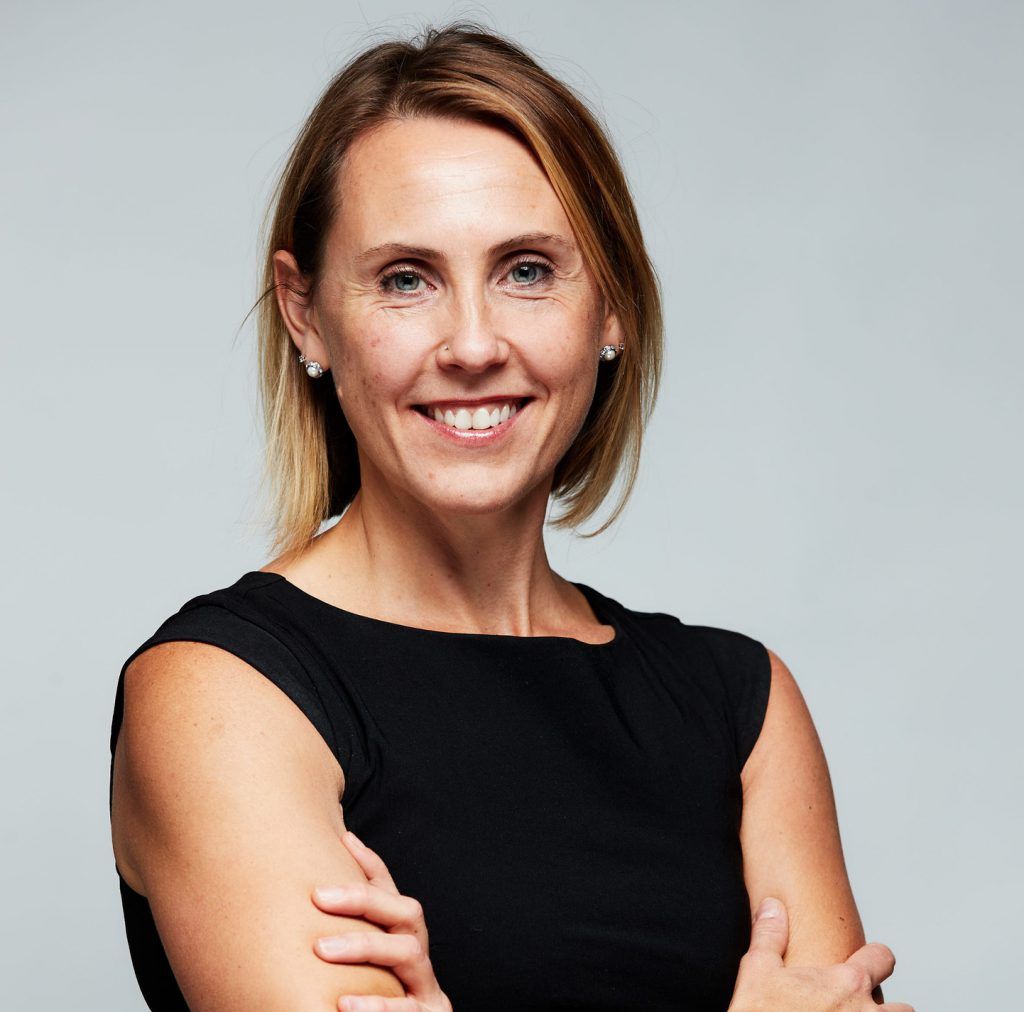

share
Related Articles
